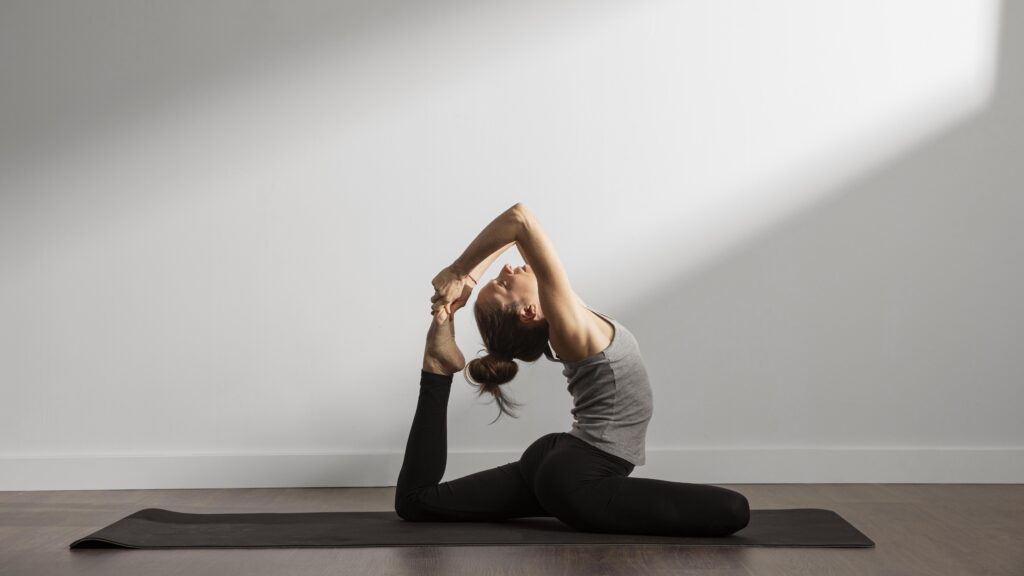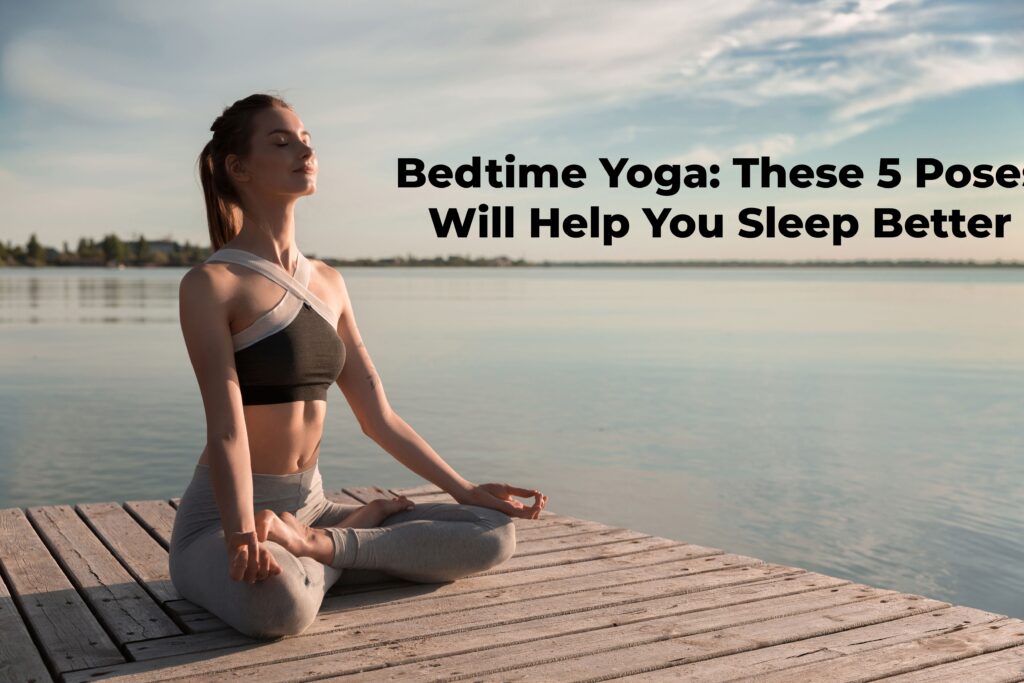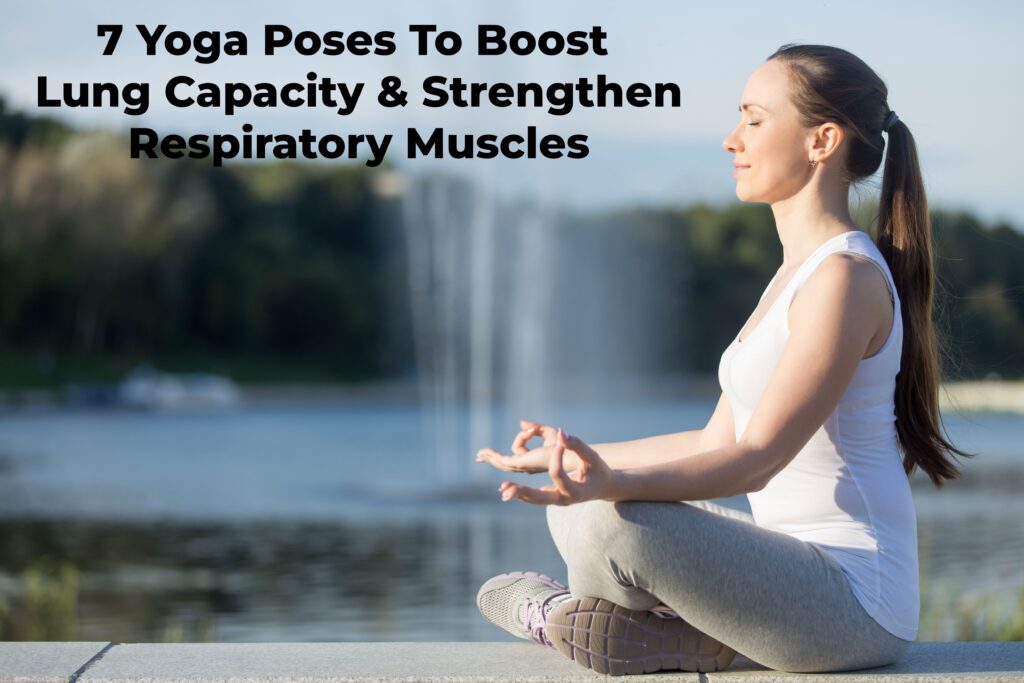Introduction
Why I prefer yoga over aerobics: Exercise is important for our health and helps keep our bodies strong and our minds clear. The two types of exercise are aerobic exercise and yoga. Although both offer many benefits, they work in different ways. Aerobic exercise increases our speed of preparation as it increases the oxygen consumption in our body. It strengthens our heart and lungs and improves our endurance. Yoga, on the other hand, connects the body and mind. It combines physical postures, breathing techniques (pranayama), and meditation to create a balanced approach to health.
In this session, we will explain what aerobic exercise is, how yoga works, and the benefits of each practice. We will look at its effects on our physical and mental health, from reducing stress, increasing flexibility, strength, and fitness.
What Is Aerobic Exercise?
The phrase “with oxygen” refers to aerobic activities, also known as cardio exercise. When you do this type of exercise, your body uses a lot of oxygen. When you do aerobic exercise, your heart rate increases and your breathing speeds up, which helps improve the health of your heart and lungs.

Here are some examples of aerobic exercises.
Walking: An activity that gets you moving.
Running: Increases your heart rate and burns calories.
Cycling: This low-impact exercise is easy on your joints.
Swimming: It uses almost every muscle in your body.
Rowing: A full-body workout that builds endurance
Aerobic exercise does more than just burn calories. It helps you lose body fat, improve stamina, and enhance cognitive functions like memory and concentration. Regular aerobics workouts can reduce stress levels and make your body more efficient at using oxygen. This benefits every part of your body.
What Is Yoga?
Yoga is an ancient discipline that combines physical movement with mental concentration. The opposite of yoga is yoga, which helps you calm your mind along with your body movements.

Asana (yoga poses): This is a physical posture that stretches and strengthens the body.
Pranayama (breathing techniques): Controlled breathing exercises that help manage stress by improving lung capacity.
Dhyana (meditation): A practice that helps you calm your mind and focus.
The main goal of yoga is to create a strong mind-body connection. This means that as you do the physical poses, you also work to calm your mind and reduce stress. Many people find that doing regular yoga asanas not only improves physical fitness, but also helps them feel more relaxed and balanced and in control of their emotions.
Yoga is suitable for people of all ages and fitness levels, and it offers many benefits, from increasing flexibility and strength to reducing anxiety and depression. Yoga can also help you lose weight. But their biggest benefit is that it improves both your body and your mind.
Comparing Aerobic Exercise and Yoga
While both aerobic exercise and yoga offer valuable health benefits, they are different in several important ways:
1. Mind-Body Connection
The difference between yoga and aerobic exercise is that they are a way to connect your body with your mind.
Yoga
Yoga is known for promoting mental health along with physical fitness. By combining movements with focused breathing and meditation, yoga helps reduce stress, tension, and mental fatigue. People who practice yoga often report a natural increase in energy and focus. In yoga, each movement is performed with mindfulness. This means you can focus on how your body is feeling. This practice can help reduce anger, increase motivation, and improve your overall mood.
Aerobic Exercise
Aerobic exercise, such as walking or running, is excellent for cardiovascular fitness, as it increases focus and oxygen consumption and heart rate, and also helps improve heart and lung health. It does not include the mental relaxation techniques that are central to yoga. Arabic means physical movement and stamina.
2. Flexibility and Posture Improvement
Both yoga and aerobic exercise help you stay fit. But they also improve different aspects of physical health.
Yoga
Yoga is very effective for increasing flexibility and improving posture. When you practice yoga, you stretch your muscles, tendons, and ligaments. This makes your body flexible. This helps prevent injuries. For example, seated and standing forward bends stretch your back and legs while calming your mind.
Aerobic Exercise
Arabic yoga focuses more on rhythmic repetitive movements. Activities like running or cycling are great for cardiovascular health because they keep your heart rate up. They don’t always include the stretching and balance components needed to improve posture or flexibility. Aerobic exercise improves muscle tone and endurance, but it still doesn’t offer the same benefits for flexibility as yoga.
3. Low Impact vs. High Impact
The type of exercise you choose will depend on how much stress you will put on your body, especially your joints.
Yoga (Low-Impact)
Yoga (low-impact) Yoga poses are generally gentle on the joints. The movements are slow and controlled, which doesn’t put too much stress on your body. This makes yoga a great option for people of all ages who have problems like joint pain. The low-impact nature of yoga makes it easy to practice consistently without the risk of injury.
Aerobic Exercise (High-Impact)
There are some types of aerobic exercise that include jumping, running, or jumping jacks. They are high-impact and put a lot of stress on your shoulders. This can lead to injury if done incorrectly or if you have pre-existing joint problems. High-impact exercises are effective at burning calories, but they are not for everyone.
Low-impact exercises like yoga are better for long-term fitness because they are easier on the joints. They give you the feeling of exercising without wearing out your body.
4. Holistic Health Benefits
Yoga and health are exercises that improve your health, but they are of different types.
Yoga
Yoga works on many health issues at once, providing a holistic approach to well-being.
Yoga meditation helps to manage stress and anxiety.
Mental health: The flow and ease of breathing help to improve your mood and mental clarity.
Spiritual connection: Yoga helps you connect with your inner self and thus find purpose and meaning in life.
Physical fitness: Yoga helps improve flexibility, strength, and balance.
Additionally, yoga helps to reduce chronic pain and stiffness, making it a beneficial practice for people with conditions such as back pain and arthritis.
Aerobic Exercise
Aerobic exercise primarily benefits the cardiovascular system.
Strengthen the heart: Regular cardio workouts make your heart more efficient at pumping blood.
Lower blood pressure: Aerobic exercise helps to control high blood pressure.
Improve cholesterol levels: It increases good cholesterol (HDL) and reduces bad cholesterol (LDL).
Increases stamina: Aerobic workouts help increase your endurance and energy levels.
Aerobic exercises provide good benefits for heart health but do not address other aspects of health as well. Such as mental clarity and stress reduction that yoga includes.
5. Breath Control and Energy Enhancement
Breathing is an important element in yoga, which is different from aerobic exercises.
Yoga and Pranayama
Breath control in yoga is called pranayama. Pranayama involves deep controlled breathing. This increases the flow of oxygen to the body and calms the mind. This practice improves lung capacity and also increases energy levels. By focusing on your breathing, you can increase your endurance and concentration while doing physical activities. Controlled breathing helps to reduce stress by activating the body’s relaxation response.
Aerobic Exercise
Aerial exercise does not focus on controlled breathing techniques while improving endurance. Breathing naturally in aerobic workouts is not emphasized in aerobic routines.
6. Weight Loss and Fitness
Both aerobic exercise and yoga help to lose weight in different ways.
Yoga for Weight Loss
Yoga increases body awareness and helps to reduce stress-related eating. This improved reading also increases metabolism by improving blood circulation and increasing muscle strength. Although yoga does not burn as many calories as high-intensity aerobic exercise, it still supports long-term weight loss in a gentle and balanced way. Regular yoga practice helps you to lose weight by establishing healthy habits and reducing stress.
Aerobic Exercise for Weight Loss
Aerobic workouts are known to burn calories at a rapid pace. Activities like running, cycling, and walking are effective for weight loss. Combining exercise with exercise is essential for long-term fat loss without changing your diet. Aerobic exercise is great for burning calories quickly and also for increasing stamina, while yoga provides a balanced approach to weight management.
7. Yoga for Mental Peace and Relaxation
A great strength of yoga is its ability to calm the mind and reduce stress.
Yoga and Meditation
Yoga involves meditation and breathing exercises that help you manage stress and anxiety.
These practices reduce stress hormone levels and improve your mood by activating your body’s relaxation response. Regular yoga calms your mind, increases concentration, and also increases your sense of well-being. Meditation can help you focus and also increase self-awareness and emotional balance.
Aerobic Exercise and Stress
Although aerobic exercise releases endorphins and helps reduce stress, it does not include the meditation that yoga does. Yoga is often effective for those who want to find a calm and centered state of mind.
Conclusion
Both aerobic exercise and yoga have amazing health benefits. And they work in different ways. Aerobic exercise is great for increasing oxygen consumption, strengthening the heart and lungs, and building endurance, which improves your heart and blood vessel health, burns calories, and helps you lose weight. Yoga, on the other hand, takes a holistic approach, working on both the body and mind at the same time. Yoga helps you gain flexibility, strength, and balance, and also reduces stress, calms your mind, and improves your overall well-being.
Yoga is not just a physical activity, but a practice that nurtures every part of you. From the controlled breathing techniques of pranayama to the calming effects of meditation, yoga helps improve your mental clarity and emotional stability by teaching you to listen to your body and be mindful of your thoughts, leading to better self-awareness and a healthier lifestyle.
Regular exercise, whether it’s just aerobic or yoga, is important at any age. Being physically active reduces the risk of serious diseases such as heart disease, stroke, type 2 diabetes, and certain types of cancer. Studies have shown that staying active reduces the risk of death by up to 30 percent.



